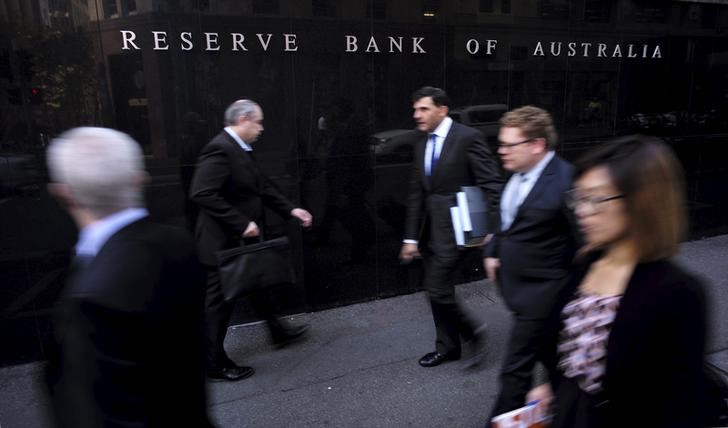(Updates with retail sales data, analyst comment)
By Swati Pandey
SYDNEY, Nov 4 (Reuters) - Australia's central bank said on Friday it sees "reasonable prospects" of achieving sustainable economic growth as solid demand from China boosts commodity prices and revives the terms of trade, suggesting further cuts in interest rates are off the agenda.
Its optimism was underpinned by a robust 0.6 percent rise in retail sales in September, marking the best two months since the middle of last year.
The data, which also came out on Friday, points to some momentum in consumer spending going into the all-important Christmas shopping period. its 60-page statement on monetary policy, the Reserve Bank of Australia (RBA) forecast the A$1.6 trillion ($1.23 trillion) economy would grow around its 3 percent potential next year before accelerating to between 3 and 4 percent in 2018.
"The tone is much more balanced and could probably even be described as upbeat," said Paul Dales, Sydney-based chief economist at Capital Economics.
"We still believe there is a chance that stubbornly low inflation may yet force the RBA to reduce rates again. But for the moment, it's becoming increasingly clear that the RBA thinks it has done enough."
The Australian dollar AUD=D4 continued its winning streak, gaining for a sixth straight day. Futures market imply at most a 40 percent chance of an easing next year.
The central bank held rates steady at 1.5 percent for a third month this week, after easing twice in May and August following surprisingly soft inflation readings.
But its pitch has changed in recent weeks.
On Friday, the RBA revised up the outlook for commodity exports following sharp increases in prices for coal, the country's second biggest export earner, which had lifted the terms of trade.
"This represents a marked change from the pattern of recent years," RBA Governor Philip Lowe wrote. "It is expected to provide some support to income growth."
"The forecasts assume that the terms of trade will remain above the low point reached earlier this year. In part, this reflects the expectation that Chinese demand for steel will remain resilient in the near-term."
The RBA left its forecasts for both growth and inflation unchanged from its August outlook.
It sees the economy expanding by 2.5-3.5 percent next year, while core inflation is seen steady at 1.5 percent, before rising to 2 percent by end-2018.
However, the performance at home has been patchy. Job growth has been slow in recent months and skewed toward part-time workers, even though the unemployment rate inches lower. Wage growth is at an all-time trough. ECONAU
The RBA expects labour costs to remain low over the forecast period and cautioned of heightened uncertainty about spare capacity in the job market and the extent to which it will ultimately feed into inflation.
The RBA also sees downward pressure on inflation from weak rents while growth in the costs of constructing a house has fallen even though building activity has strengthened. ($1 = 1.3021 Australian dollars)
